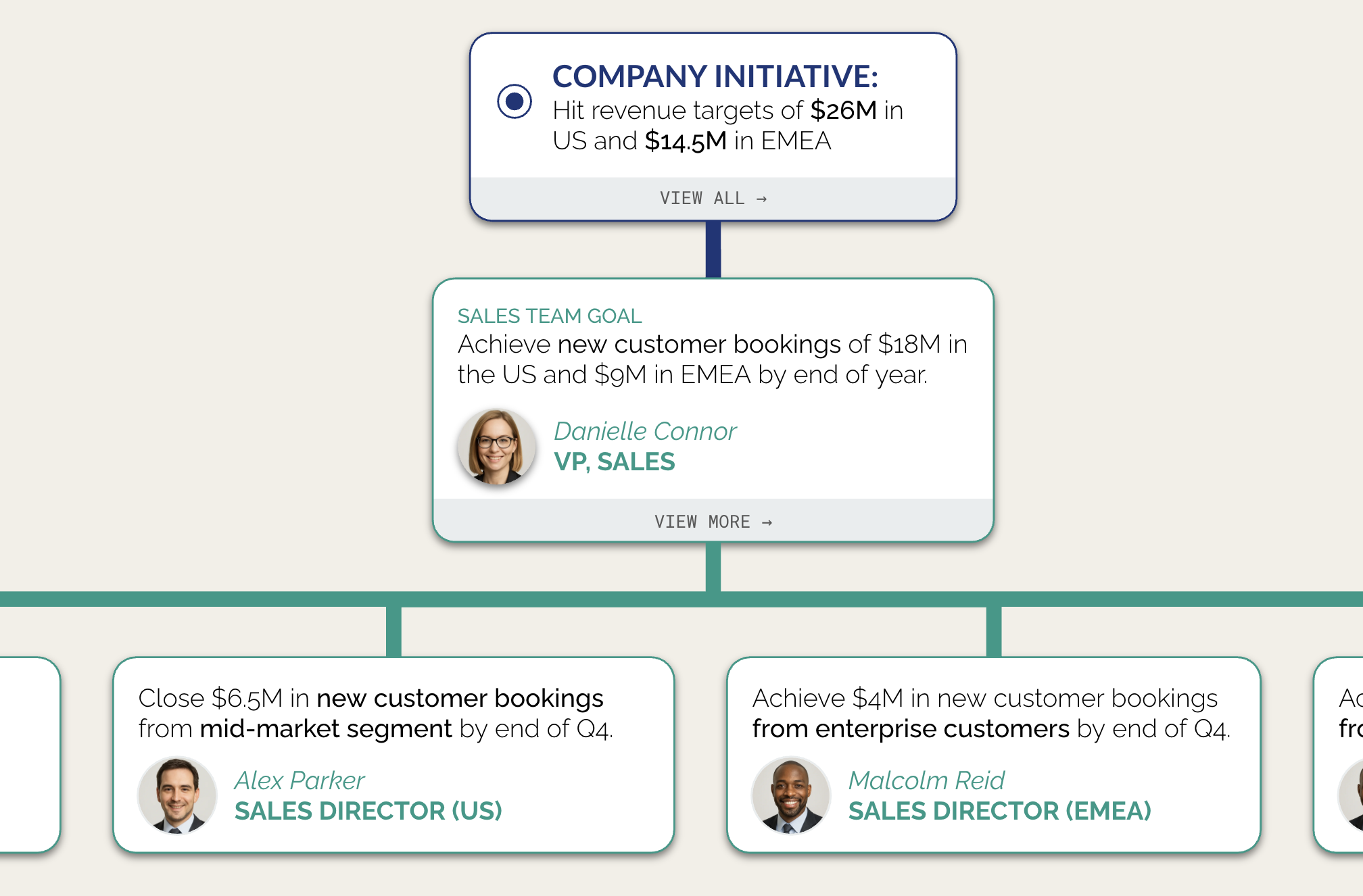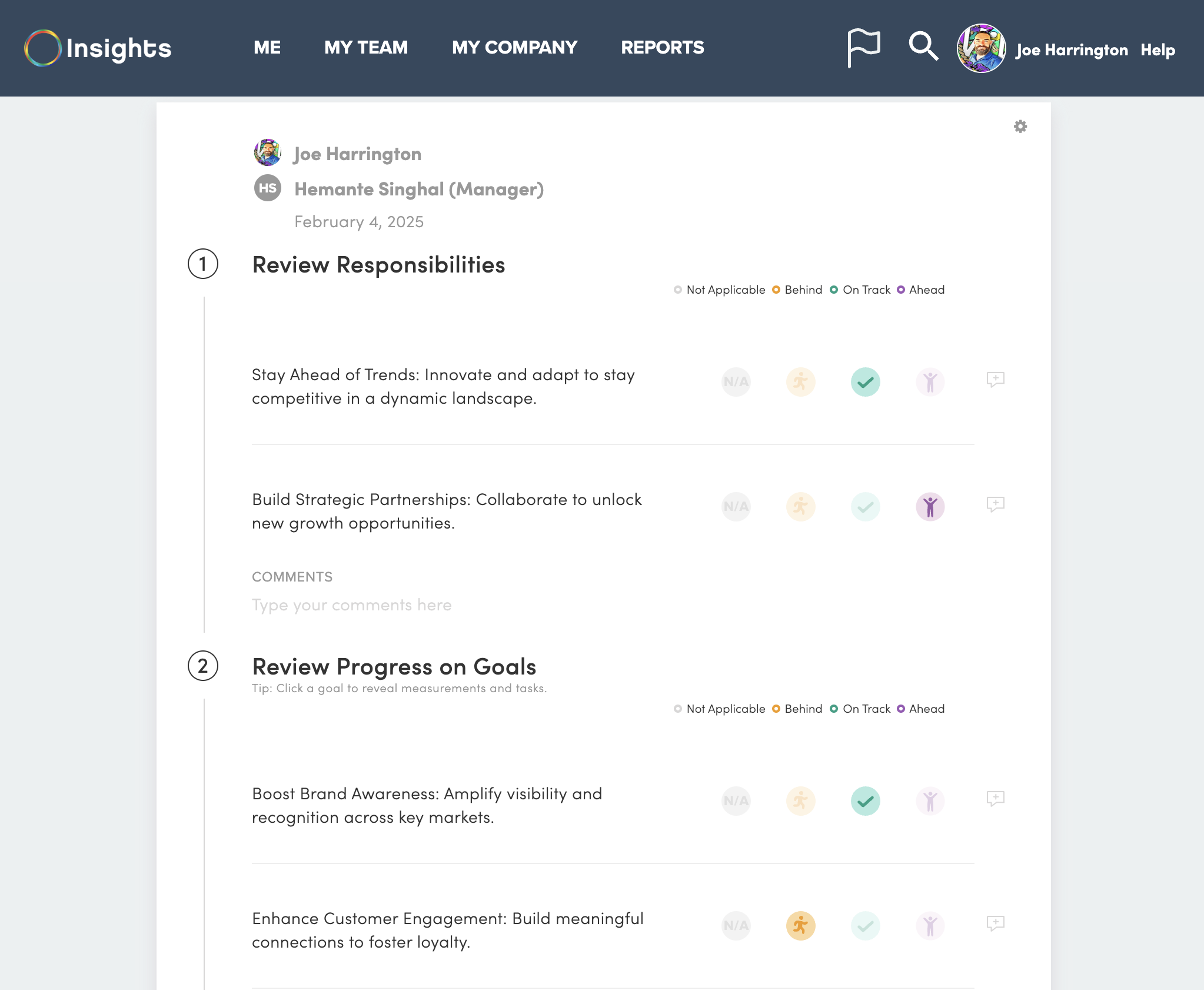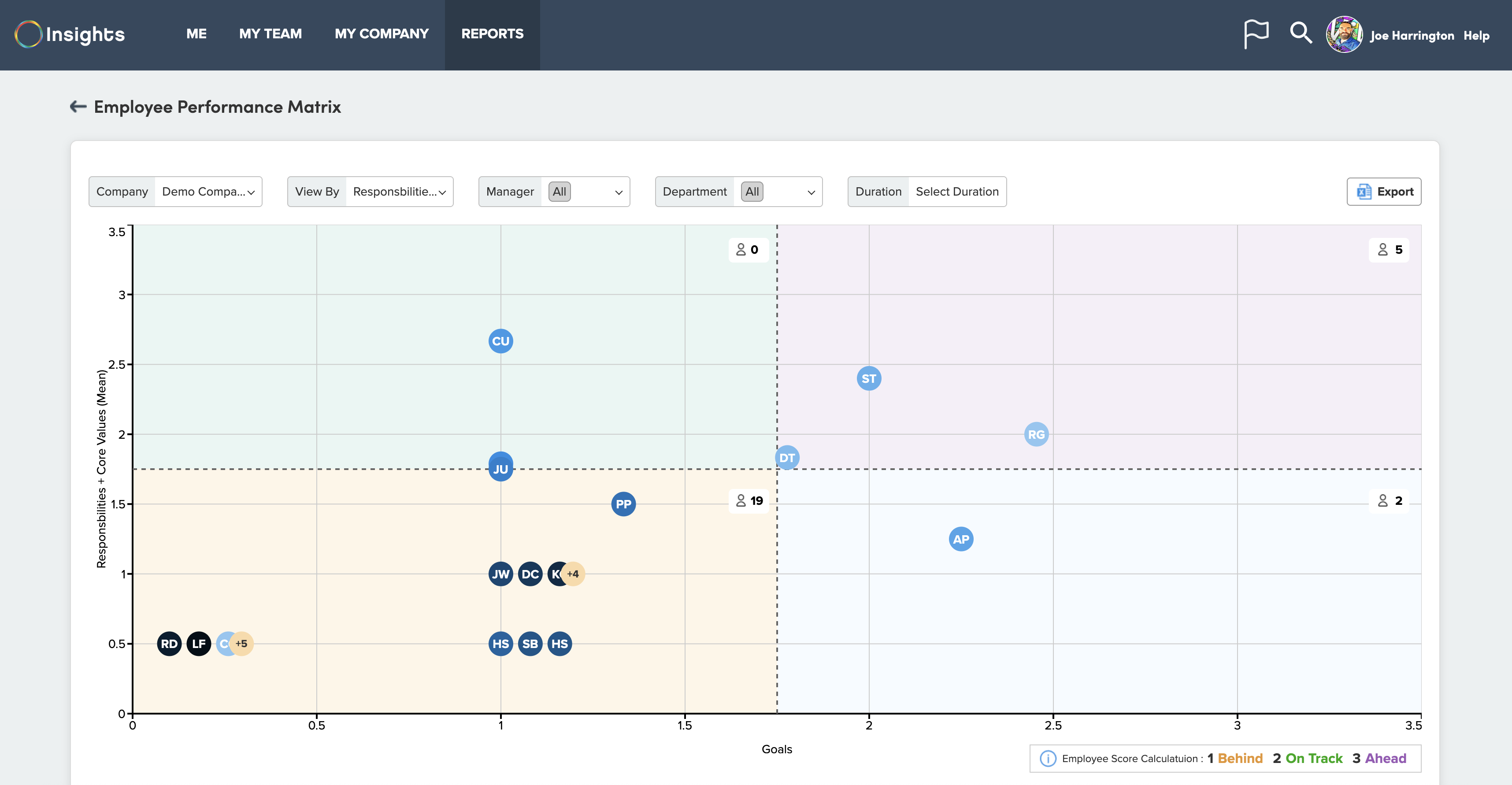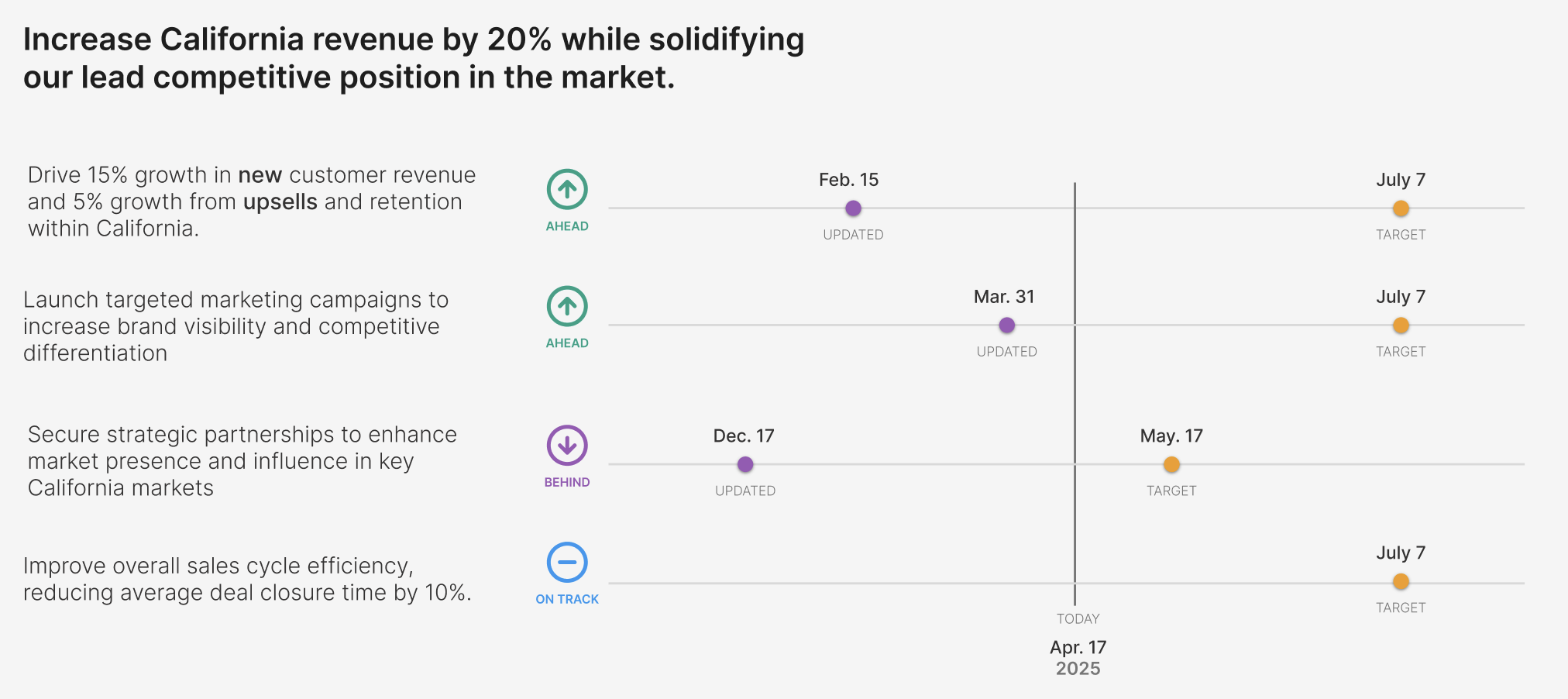Align, Engage, Execute
Purpose-Powered Performance
A strategy-to-execution platform designed for mission-driven companies to seamlessly connect strategic objectives with employee work.
Transform How Your Team Works
By leveraging smart goal alignment, progress tracking, and mission-focused insights, our system ensures that your whole team is deeply engaged with the company's vision while delivering measurable, mission-critical outcomes.

Platform Highlights
Work with Purpose
Employees gain unparalleled clarity on how their day-to-day work directly contributes to the company's mission and strategic objectives.
-
Smart Goal Authoring: Employees and managers co-create mission-aligned goals.
-
Alignment Visualizations: See how goals ladder up to priorities.
-
Critical Feedback Loops: Discuss progress during check-ins.
-
Purpose-Driven Engagement: Connect work directly to the mission.


Impact Tracking Dashboard
This feature transforms traditional performance management by focusing on measurable contributions to mission-critical projects and strategic initiatives.
-
Mission Impact Metrics: Track goal contribution to the mission.
-
Progress Visualizations: Clear dashboards show goal progress.
-
Executive & HR Insights: Advanced reporting for a bird's-eye view.


WHAT PEOPLE SAY ABOUT INSIGHTS
"Insights finally connected our strategy discussions to daily execution. Our teams feel more aligned and purposeful than ever before."
Alex Johnson
CEO, FutureForward Inc.
"The impact tracking is phenomenal. We can clearly see how individual contributions ladder up to our mission goals, boosting morale and accountability."
Maria Garcia
Head of People, Innovate Solutions
"As a manager, the check-in features and goal visualizations make performance conversations more meaningful and focused on mission impact."
David Chen
Engineering Manager, TechForGood
WHY CHOOSE INSIGHTS
From Vision to Execution
Track and measure what truly matters...
Connect Every Employee
Organization-wide goal alignment...
Engagement into Impact
Turn employee engagement...
See the Big Picture
Align, execute, and achieve...
Comprehensive Support & Training
We ensure your team is fully equipped from day one. Our comprehensive support and training resources are designed for immediate effectiveness and include:
- Role-specific onboarding and training sessions tailored to managers and employees.
- An extensive library of on-demand learning resources, guides, and tutorials.
- Ongoing educational webinars covering best practices and new feature releases.
- Dedicated customer support channels for timely assistance.
Ready to Transform Your Organization?
Discover how Insights can help your mission-driven company achieve its strategic objectives.